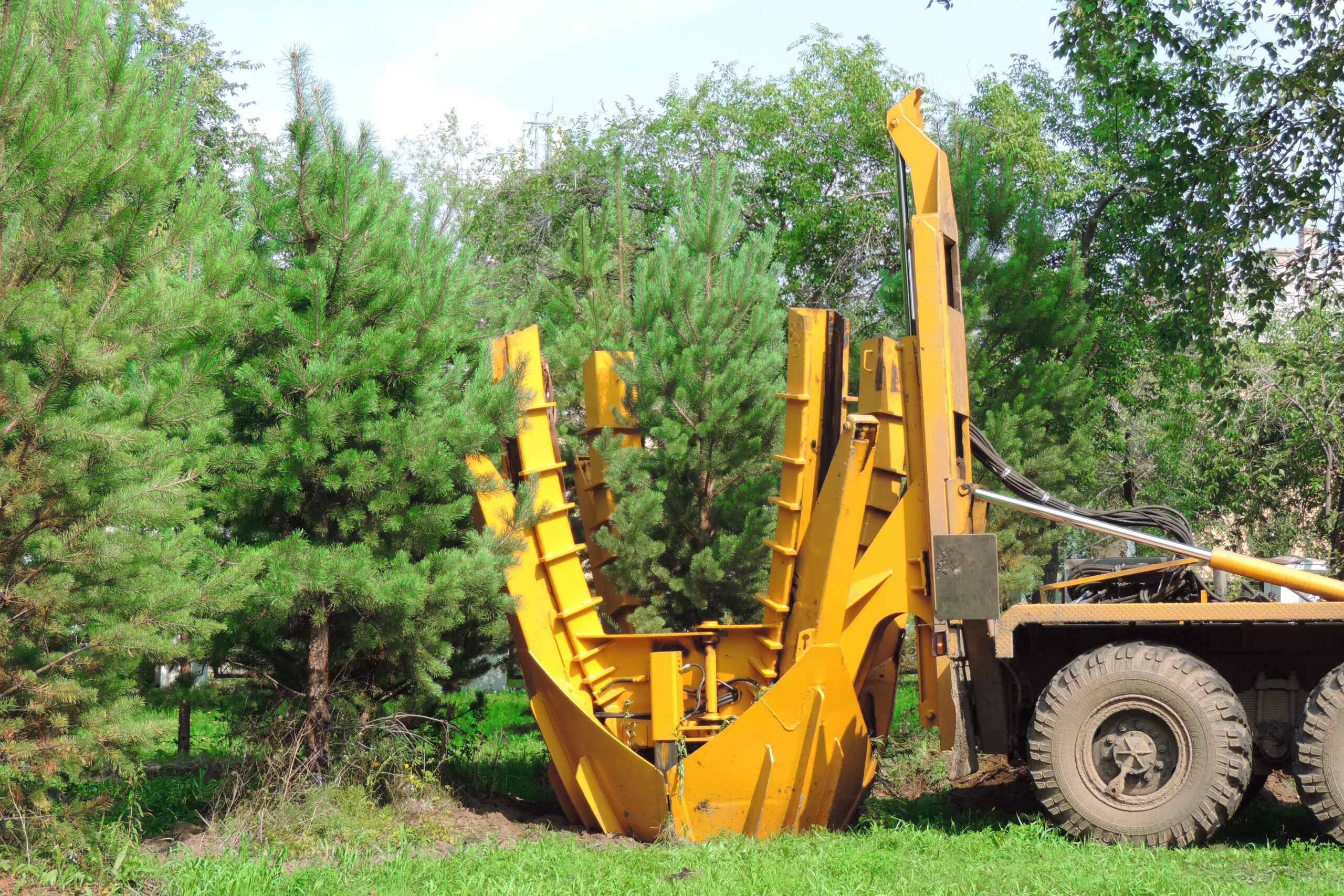Can you really uproot a 100-year-old tree and expect it to thrive somewhere else? It sounds like something out of science fiction. But at Environmental Design, Inc., we do it every day—and we’ve been doing it for over 40 years.
Tree transplantation is an art and science often misunderstood. From whispers that moved trees won’t survive, to fears that costs are too high to justify, misinformation runs deep. The truth? With the right expertise, trees not only survive relocation—they thrive.
Environmental Design, Inc. is a global leader in large tree transplantation. Our patented ArborLift® system, unmatched experience, and commitment to long-term tree health allow us to challenge—and change—what people think is possible.
Let’s bust the most common myths about moving large trees and show you what’s really possible when precision meets passion.
Myth #1: Large Trees Can’t Survive Transplanting
Truth: Survival Rates Are Strong with the Right Expertise
This myth comes from experiences with poor transplanting techniques, not poor tree resilience. At Environmental Design, Inc., our survival rate for large trees is among the highest in the industry. Why? Because we know what it takes.
We start with root zone preparation well before the move. This process stimulates fine root growth—critical for water and nutrient uptake post-transplant. Then we deploy proprietary technology, like ArborLift®, to gently lift and transport trees with minimal disruption to their root systems.
Our clients include universities, private estates, municipalities, and global landmarks. And across every site, survival isn’t a question—it’s an expectation.
Truth: Trees Thrive When Health Is Prioritized
Transplanting is more than moving soil and timber—it’s about maintaining tree vitality. That’s why our job doesn’t end once a tree is placed. We stay involved.
We offer aftercare programs tailored to the species, site, and climate. Monitoring irrigation, soil health, and growth patterns post-installation ensures trees adjust and thrive in their new homes.
The myth of poor survival? It’s rooted in old methods. Modern science and precision techniques have redefined what’s possible.
Myth #2: It’s Too Expensive to Be Practical
Truth: It’s an Investment—Not an Expense
Sticker shock happens when people don’t understand the full value of mature trees. Moving a large tree is an investment in shade, aesthetics, history, and sustainability. And unlike new plantings, the results are immediate.
Environmental Design, Inc. helps developers avoid years of waiting for new trees to mature. Whether it’s preserving a beloved legacy tree on a golf course or maintaining the shade canopy of a museum plaza, relocating a mature tree can often be more cost-effective than replanting and maintaining immature trees for decades.
Truth: Costs Are Comparable to Other High-Value Landscape Features
Think about what people spend on hardscaping, lighting, or water features. A relocated tree can outlast all of them—while increasing property value, sequestering carbon, and offering ecological benefits from day one.
When you weigh the long-term benefits and reduced maintenance costs, the value becomes clear.
Myth #3: Moved Trees Stop Growing
Truth: Trees Continue to Grow When Moved Correctly
One of the biggest misconceptions is that moving a tree “freezes” its development. The reality? With proper techniques, large trees adapt and continue growing—sometimes even more vigorously, thanks to optimized soil and water management in their new environment.
We’ve moved trees that are now thriving decades later. In fact, many of the landmark trees we’ve transplanted for golf courses and resort properties have gone on to flourish—and become signature visual elements of the landscape.
Truth: Transplanting Can Even Enhance Growth
Why? Because relocation offers an opportunity to correct poor soil conditions, eliminate competition, and re-establish a stronger root-to-soil relationship. It’s a fresh start.
Our ArborLift® method is engineered to preserve and protect growth-critical root zones, ensuring trees are not only sustained but set up to thrive.
Myth #4: It’s Risky for the Environment
Truth: Tree Relocation Is a Sustainability Strategy
Transplanting large trees is often more environmentally responsible than clear-cutting or bulldozing. We work with developers, universities, and municipalities to integrate tree preservation into large-scale planning.
Whether it’s preserving native forests, protecting culturally significant trees, or saving mature shade trees in high-density developments, relocation reduces the carbon footprint associated with deforestation and replanting.
Truth: It Reduces Waste and Conserves Natural Resources
Instead of grinding up a tree and shipping in a nursery replacement, we help you save what’s already growing—preserving biodiversity, reducing material waste, and minimizing emissions.
Tree relocation is the ultimate form of recycling. And we’re proud to be the industry leader in doing it right.
Myth #5: Only Certain Species Can Be Transplanted
Truth: Nearly All Tree Species Can Be Moved—With the Right Plan
We often hear that only “hardy” trees can be relocated, but this oversimplifies the science behind successful transplantation. With proper assessment, planning, and timing, nearly any species can be moved—yes, even the sensitive ones.
Our team evaluates each tree’s biology, seasonal behavior, and site conditions before crafting a customized relocation strategy. Whether it’s a delicate Japanese maple, a towering pine, or a sprawling live oak, we’ve developed techniques to protect root systems and maintain health through every stage of the move.
Truth: Experience Matters More Than Species
The secret ingredient isn’t the tree—it’s the team. With over four decades of transplanting experience across dozens of species and climates, Environmental Design, Inc. brings a level of expertise that dramatically increases the success rate of species others wouldn’t touch.
The real limitation isn’t biological—it’s logistical. And that’s a problem we solve every day.
Myth #6: Transplanting Trees Delays Construction Projects
Truth: Tree Moving Can Be Aligned Seamlessly with Construction Schedules
Timing is everything in development—and we get it. Clients often worry that relocating large trees will slow their project down. But when done right, tree transplantation can be a streamlined part of the buildout process.
Our team works in lockstep with general contractors, architects, and landscape designers to coordinate move dates, staging, and site preparation. In fact, proactive tree relocation can prevent delays by removing high-value trees from active work zones ahead of heavy construction.
Truth: It’s a Smart Pre-Construction Strategy
Some of our most successful collaborations have happened before a shovel hits the ground. Early planning allows for ideal root-pruning timelines, efficient logistics, and better tree outcomes overall.
With Environmental Design, Inc. involved early, you’re not dealing with a delay—you’re investing in a seamless process that protects your landscape, schedule, and bottom line.
Conclusion
Tree transplantation isn’t guesswork. It’s a refined practice backed by science, skill, and decades of field-tested success. The myths? They come from outdated methods and limited perspectives. But we’ve proven—over and over—that large trees can survive, thrive, and transform landscapes when relocated with precision and care.
Don’t let myths stop you from making a bold, beautiful, and sustainable choice. The right partner makes all the difference.
Environmental Design, Inc
At Environmental Design, Inc., we’ve been pioneering the art and science of tree transplantation for over 40 years. From historic oaks to 60-foot palms, we’ve moved the impossible—and helped it grow.
If you’re ready to challenge what’s possible in your next landscape project, we’re ready to help. Contact us today to schedule a consultation.
Let’s move something extraordinary—together.






Recent Comments